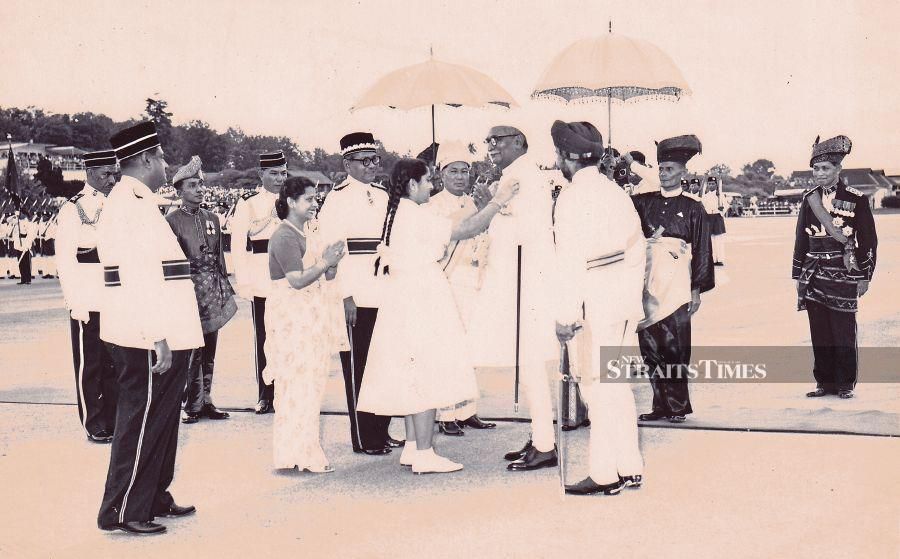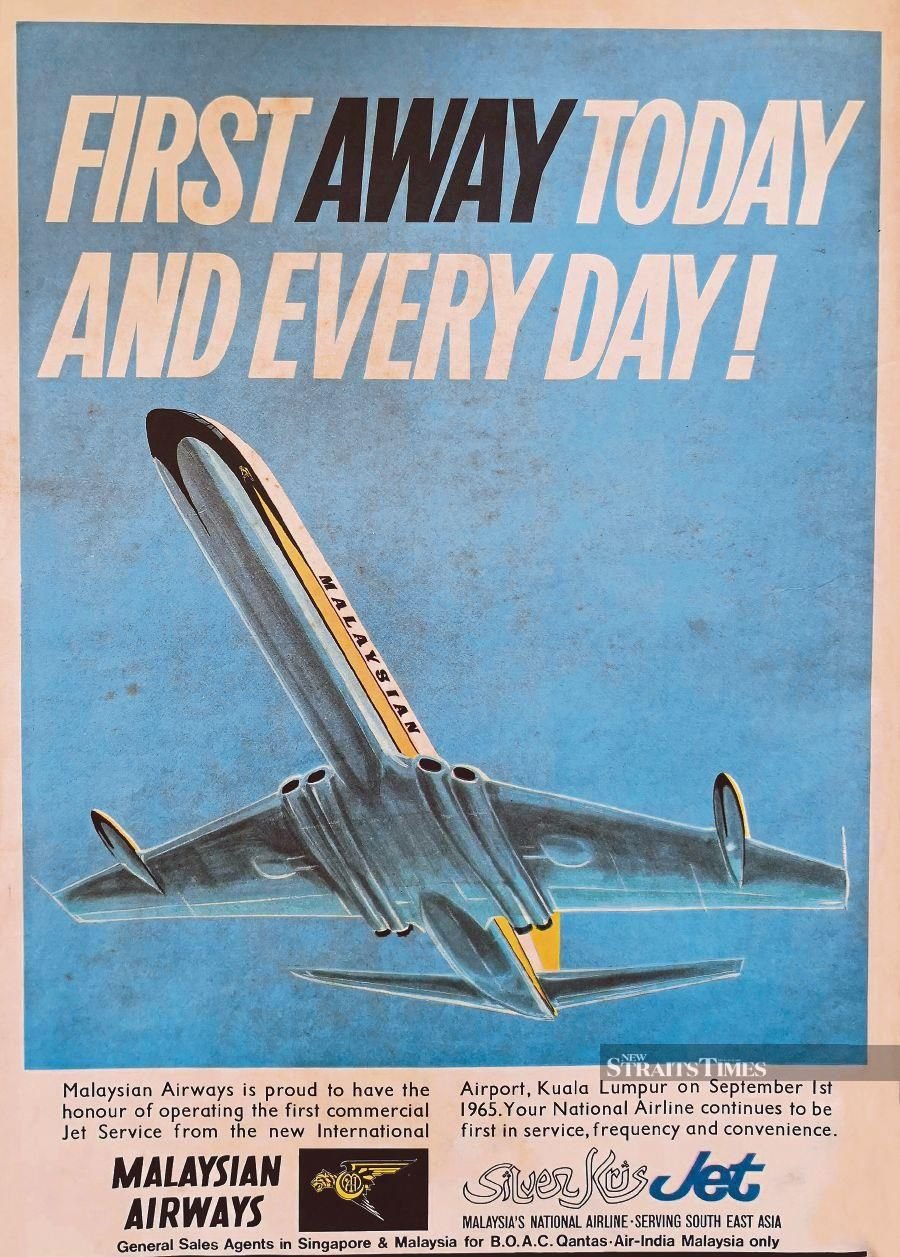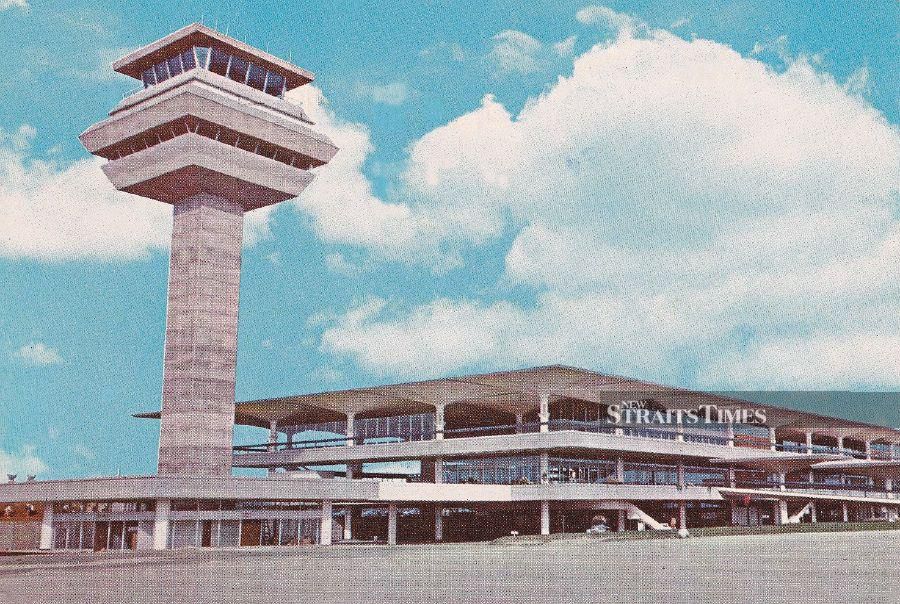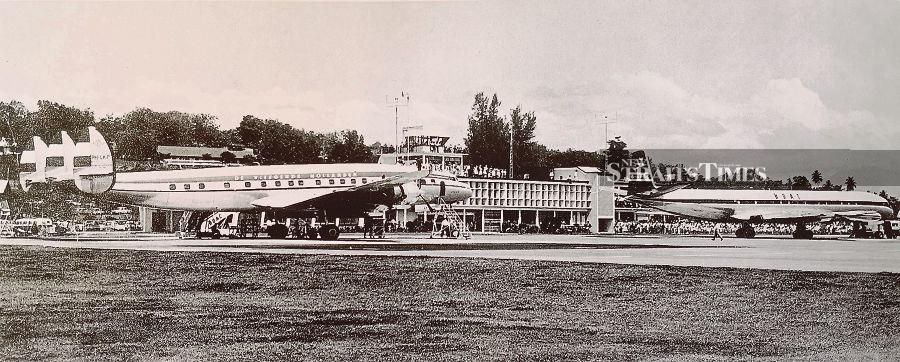The Straits Times, the first newspaper in this country and also in Asia, recently celebrated its 176th anniversary.
Throughout its long and illustrious history as a reliable source of news and information in Malaya (later Malaysia), Sarawak, North Borneo (now Sabah), Brunei and Singapore, the daily, in its present form as the New Straits Times, has reported on many milestones marking our nation's progress and achievements.
Apart from being a leading English-language newspaper, the daily capitalised on its extensive pool of talented and resourceful editors and journalists to produce many special editions commemorating significant national events, like Merdeka, state ruler installations, as well as the completion of national landmarks, including Masjid Negara and Stadium Negara.
In contrast to the daily's current head office in Jalan Riong, Kuala Lumpur, most of these historic supplements were printed and published in the past in Jalan Pudu.
Among the many special issues, which have become prized keepsakes among collectors, the one celebrating the completion of the Kuala Lumpur International Airport bears special significance as back in 1965, the spanking new hub stamped Malaysia's dominance as a major global air transportation centre.
FIRST KUALA LUMPUR AIRPORT
The then new airport in Subang Jaya was, however, not the first of its kind located within Kuala Lumpur. That proud distinction goes to the one in Sungai Besi, which has been in existence since the early 1930s.
Starting off with a rather short runway and a rudimentary wooden hut control tower, it originally served as a transit point for private passenger and airmail flights destined for the more important Alor Star Airport, before heading off to destinations beyond Malayan shores.
Sungai Besi did not remain in the background for long as, within just a few short years, increasing demand from the then capital of the Federated Malay States ensured the airport of a continuous series of renovations and runway extensions over the next decade.
The marked improvements gradually usurped the Kedah aerodrome's influence and began attracting larger planes belonging to British and Dutch commercial long-range airlines to Kuala Lumpur.
The future prosperity of air travel for Kuala Lumpur was sealed when Imperial Airways, the pre-war predecessor of British Overseas Airways Corporation (BOAC) and now British Airways, bypassed Alor Star and began direct mail flights from Sungai Besi, as well as Bayan Lepas in Penang, to London on April 15, 1934.
Eager to keep up with the competition, Royal Dutch Koninklijke Luchtvaartmaatschappij NV (KLM) planes followed suit a few years later.
Growth picked up pace soon after the Japanese Occupation as Malaya emerged from the throes of untold atrocities and widespread hardship.
Spurred by the birth of our own carrier, Malayan Airways, as well as active participation of equally new regional airlines like the Union of Burma Airways (now Myanmar National Airlines), annual passenger traffic in Kuala Lumpur leapt to more than 500,000 in 1948.
INTERNATIONAL RECOGNITION
With extensive routes added and the arrival of more airlines from around the world, the Kuala Lumpur Airport was finally awarded international status on August 1, 1956. This significant milestone was celebrated with much fanfare when Tunku Abdul Rahman, in his capacity then as the Federation of Malaya chief minister, officially opened the spanking new terminal building constructed at a cost of $590,000.

With Merdeka just a year away, this timely recognition was a source of national pride as it assured greater prominence on the world aviation map, with tourists and members of the business fraternity arriving by the droves, eager to witness for themselves the wonders and untapped opportunities Kuala Lumpur and the rest of soon-to-be independent Malaya had in store.
About a year after Queen Elizabeth II's representative and uncle, the Duke of Gloucester, flew off in the royal BOAC Britannia after witnessing the Merdeka ceremony, Sungai Besi was once again a hive of activity as independent Malaya gave a rousing welcome to its first visiting dignitary on Sept 6, 1958.
President Rajendra Prasad's visit was especially significant as it cemented close ties between India and Malaya that is enjoyed until this very day.
Some five years later, Malaya warmly received the arrival of three international beauty queens, who were on a goodwill tour around the world.
The presence of Miss USA (Carolyn Joyner), Miss California (Marilyn Tindall) and Miss Ireland (Josie Dwyer), as part of a long list of events planned in the run-up to Malaysia Day on Sept 16, 1963, gave our nation invaluable international coverage and threw the limelight on notable places visited by the trio in Kuala Lumpur, Johor and Penang.
SEARCH FOR A WORTHY SUCCESSOR BEGINS
The rapid expansion seen during the post-Merdeka years, however, saw Sungai Besi becoming the tragic victim of its own resounding success.
With a runway orientated directly at an imposing mountain range and residential homes as well as light industries rapidly encroaching on the other remaining sides, there was simply no more room for the Kuala Lumpur International Airport to develop and improve to attain the coveted first-class air hub certification.
Quick to realise this potential growth obstacle, prime minister Tunku Abdul Rahman prudently put plans into action for a new airport.
A man whose visionary ambitions have become hallmark of his administration, Tunku was so taken by the Brussels Airport during a trip to Belgium in May 1960, that he lost no time in tracking down its designer, L.M. Chapeaux.

The renowned engineering firm head and his team, which specialised in global airport construction, were flown to Kuala Lumpur to conduct a series of surveys. The Belgians eventually settled for a site that straddled the Subang water catchment area and the Sungai Buloh Forest Reserve, located some 20 kilometres from the capital.
Helming a young nation with little expertise in such a huge undertaking, the Malayan government had no alternative but to send tender documents to 36 reputable companies in 11 countries to build the sprawling jet age complex. After receiving 14 submissions, the contract was finally awarded to Gammons (Malaya) Ltd and two American companies, Pomeroy and Hawaiian Dredging.
With things moving at breakneck speed, time soon came for Tunku to climb on board a yellow bulldozer and ceremoniously mark the start of earthworks for the four-kilometre runway on Dec 11, 1962.
Said to be the longest of its kind in Southeast Asia then, the tarmac was not only designed to withstand the rigours of existing aircraft types, but also those foreseen in the supersonic near-future.
The 32-page Straits Times Kuala Lumpur International Airport supplement is a gold mine of information. Distributed free with the daily on the day the airport was officially declared open by the third Yang di-Pertuan Agong Tuanku Syed Harun Putra ibni Almarhum Syed Hassan Jamalullail on Aug 30, 1965, the A3 -sized booklet aptly featured the most recognisable part of the new airport on its front cover.
The iconic 50 metre-high control tower was a fitting crowning glory that was filled with the latest communication systems and served as nerve centre for the $52 million hub.
WELCOMING AIR FORCE ONE
Although visitors were likely to overlook inconspicuous ancillary buildings like the post and telegraph office, meteorological station, freight hangars and fire station, but the ultra-modern terminal, with its stunning vaulted design, was sure to leave a lasting impression.
Among the first few dignitaries to set eyes on this beacon of Malaysia's progress was United States president Lyndon Baines Johnson.
The airport was decorated to the nines as Malaysians from all walks of life gathered to cheer wildly after Air Force One came to a halt on the tarmac on Oct 30, 1966.
Johnson's visit, the first for an American head of state, lifted relations to new heights and was seen as a friendly follow-up to deputy prime minister Tun Abdul Razak Hussein's mission to Washington and subsequent meeting with president John Fitzgerald Kennedy at the Oval Office some three years earlier.

Apart from the Parliament building, National Monument and the University of Malaya, Johnson took time off during his brief 20-hour stopover to view Malaysia's showcase Labu Jaya rural development scheme, where he thoroughly enjoyed a refreshing drink from a young coconut with a straw.
The Negri Sembilan settlement was later renamed Felda L.B. Johnson in honour of the momentous visit.
HEAVYWEIGHT CHAMPIONS CONVERGE
While there was never a dull moment at the bustling airport, it took nearly another decade before the boisterous crowd size seen during the Johnson visit converged once again in Subang.
World heavyweight boxing fans and curious onlookers made a beeline for the Kuala Lumpur International Airport when Malaysia played host to one of the most hotly contested championship clashes between Muhammad Ali and Joe Bugner in 1975.
Bugner, the then reigning European champion, was warmly welcomed by an enthusiastic kompang ensemble the moment he stepped off the Malaysian Airline System (now Malaysia Airlines) aircraft in Subang on June 7, 1975.
Then, just days later, the same airport was turned into a sea of people when fans in the tens of thousands jostled with each other just to catch a glimpse of Ali.
The unexpectedly huge turnout caught the security guards completely on the wrong footing. Overwhelmed, the men in uniform watched helplessly as part of the airport fencing was completely flattened by crowds that had suddenly surged forward after hearing that the American world champion was already in the building.
The situation became so chaotic that several fans suffered minor injuries, and one even reported the mysterious disappearance of a pair of socks despite still having his boots on!

Despite its huge success as a major international air hub, severe overcapacity and a spate of fatal blazes that occurred in the early 1990s then prompted the government to begin considering a more suitable international airport site to replace Subang.
SEPANG BECOMES HOME
Designed by renowned Japanese architect Kisho Kurokawa, the new Kuala Lumpur International Airport in Sepang was, and still is, one of the world's largest when officially opened by the 10th Yang di-Pertuan Agong Tuanku Ja'afar ibni Almarhum Tuanku Abdul Rahman on June 27, 1998.
Ready in time for the 1998 Kuala Lumpur Commonwealth Games, the state-of-the-art airport was a culmination of features that showcased the best of Malaysia.
The hyperbolic paraboloid roof, with its many intricate and abstract geometric designs, highlights Islam as the official religion while the lush man-made tropical rainforest successfully realises the unique symbiotic relationship between our nation's greatest natural resource and human architectural ingenuity.
Constructed to the tune of RM8.5 billion, the Kuala Lumpur International Airport has admirably withstood numerous challenges brought about by two financial crises, as well as the Severe Acute Respiratory Syndrome (SARS) and bird flu epidemics in recent history.
Although past hindrances paled in comparison with the current Covid-19 pandemic, it is beyond doubt that our country's main transportation hub will not only be able to weather this epic global menace, but also emerge stronger than ever while propelling Malaysia to even greater heights.





